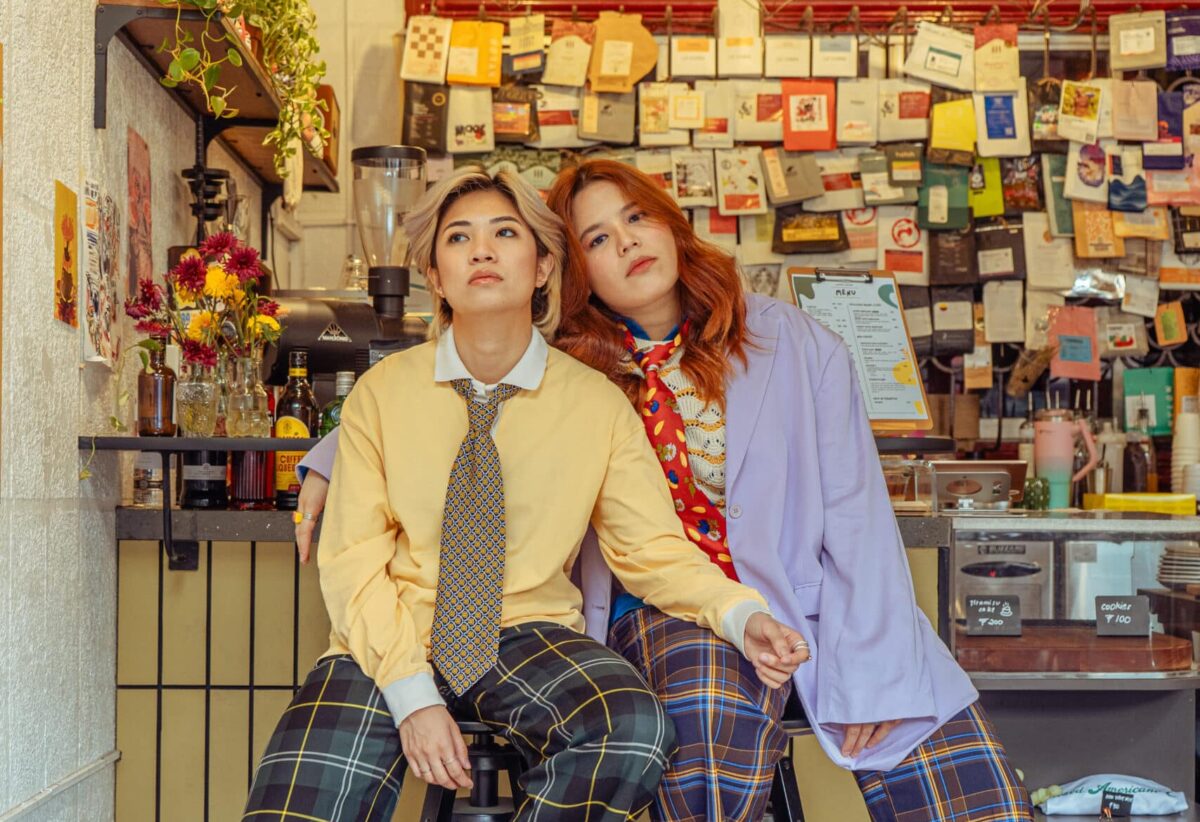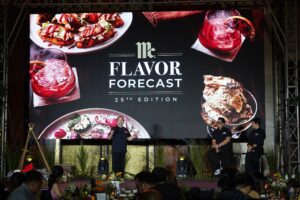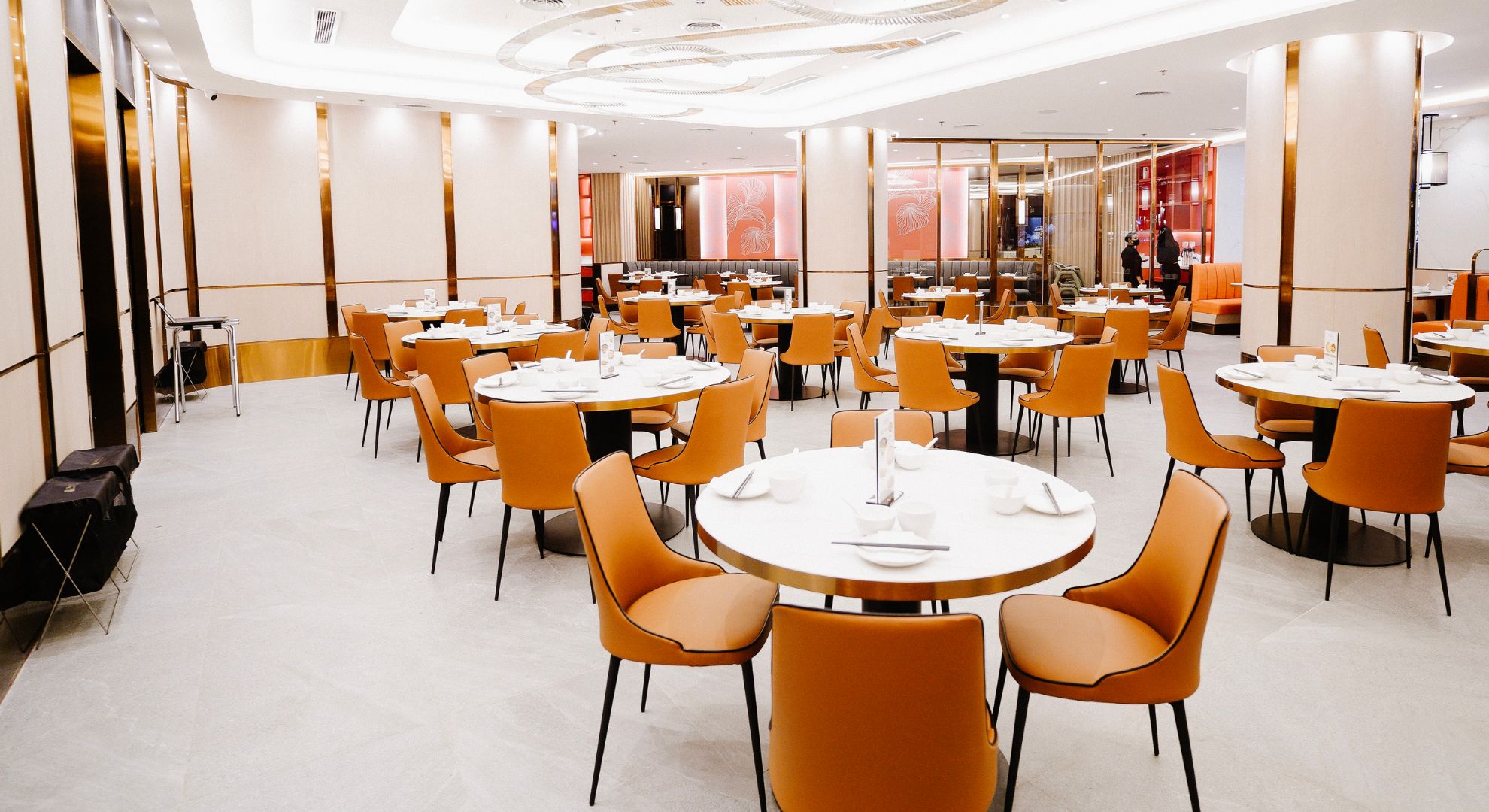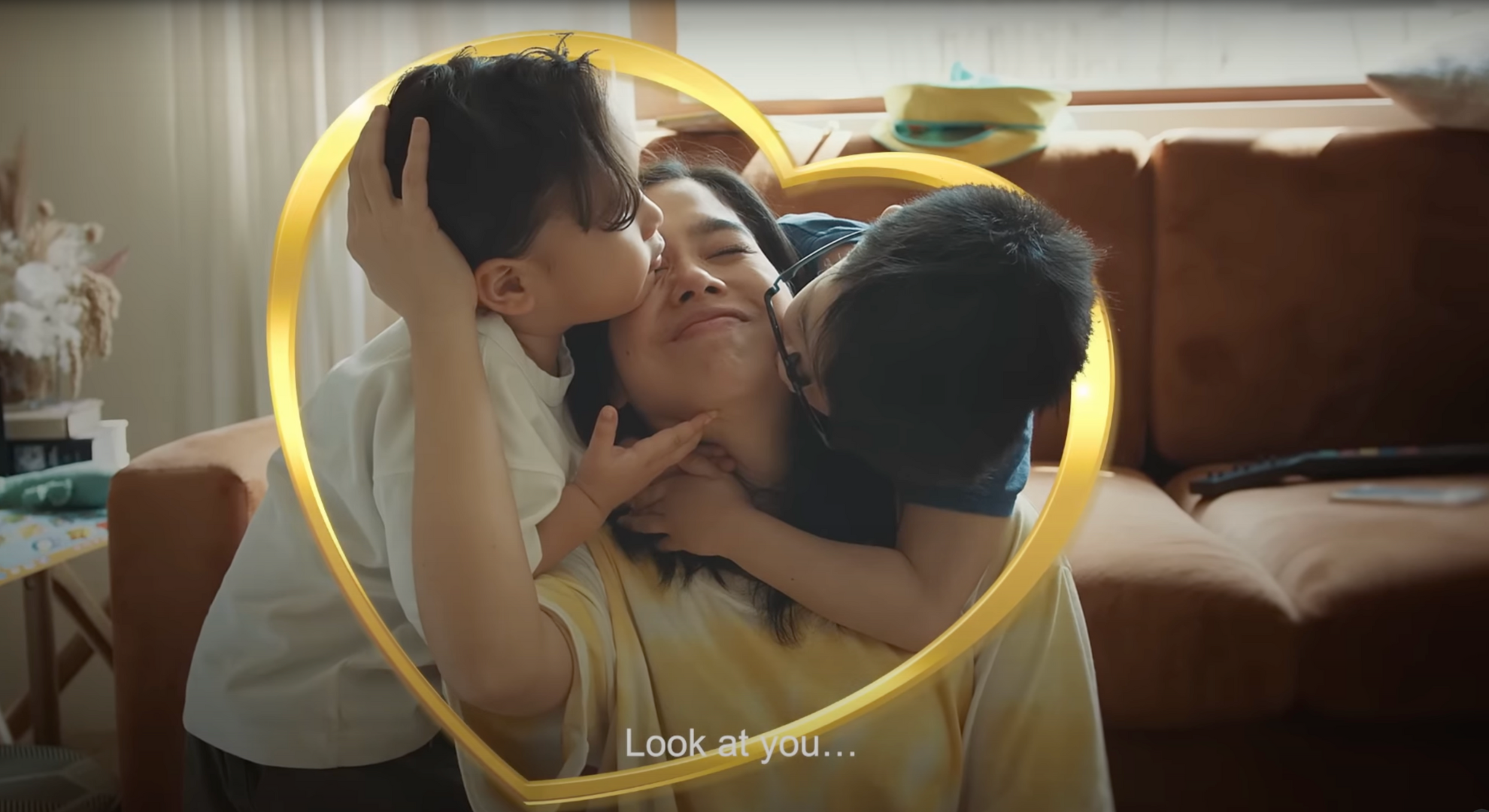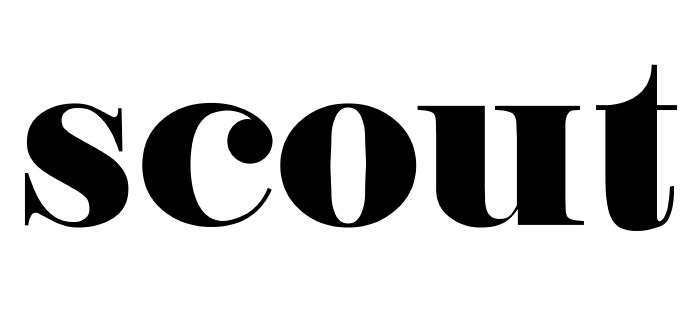Look up at RCBC Plaza in Makati’s business district and beyond its glass exterior and you might just glimpse an unfinished office floor—corporate real estate in limbo but glimmering with color, shapes, and textures inside.
This is the ongoing group exhibition “Here & Now & Now & Then” curated by Nilo Ilarde that runs until May 25, 2025.
Ilarde, a curator and conceptual artist, is a disciple of the one-man movement that is Roberto Chabet’s school, not just by lineage but also by logic. His approach in both painting and curating is shaped by decades of conceptual rigor, grounded in a persistent questioning of form, authorship, and institution. His work is deeply conceptual, unafraid of silence, negative space, or unresolved tension, and consistently challenges the norm.
The show was produced by Ilarde, Marco Y. Santos, Teddy G. Catuira, Bianca Bauer, Pete Jimenez, and Oca Villamiel.
One of the producers, creative director Catuira, says in an email interview that felt more like a critical art essay than a typical Q&A, “To activate a space is to reimagine its function, transforming not just how a place looks, but how it feels, how it speaks, how it’s lived in… It is to challenge the passive neutrality of the built environment and assert that meaning can emerge from anywhere—even in places left unfinished, unnoticed, or forgotten.”
“The producers and organizers of the exhibit had a simple but radical idea to bring art into the middle of everyday life, where people don’t expect it,” wrote Catuira, “Don’t hide it in a white-walled gallery. Don’t wait for people to seek it out. Instead, place it in their path—in the friction and the blur of the workday, the in-between moments that often go unnoticed.”
Breathing art into dead space
To get to the exhibit space, it’s a quick walk past the office building’s security and office workers, up to the third floor via elevator or escalator. Parallel to a Starbucks and a Potato Corner stall are nondescript glass doors. Past the doors and into the exhibition space are both fine art and crude walls, which, after the bustling corporate office building, come together like an unexpected jolt.
There is no attempt to hide its origins as a corporate floor left in its raw, unfinished state. The walls are stripped down, the gray concrete exposed alongside wiring and metal poles, with remnants of construction like tiny stones littering the floor.
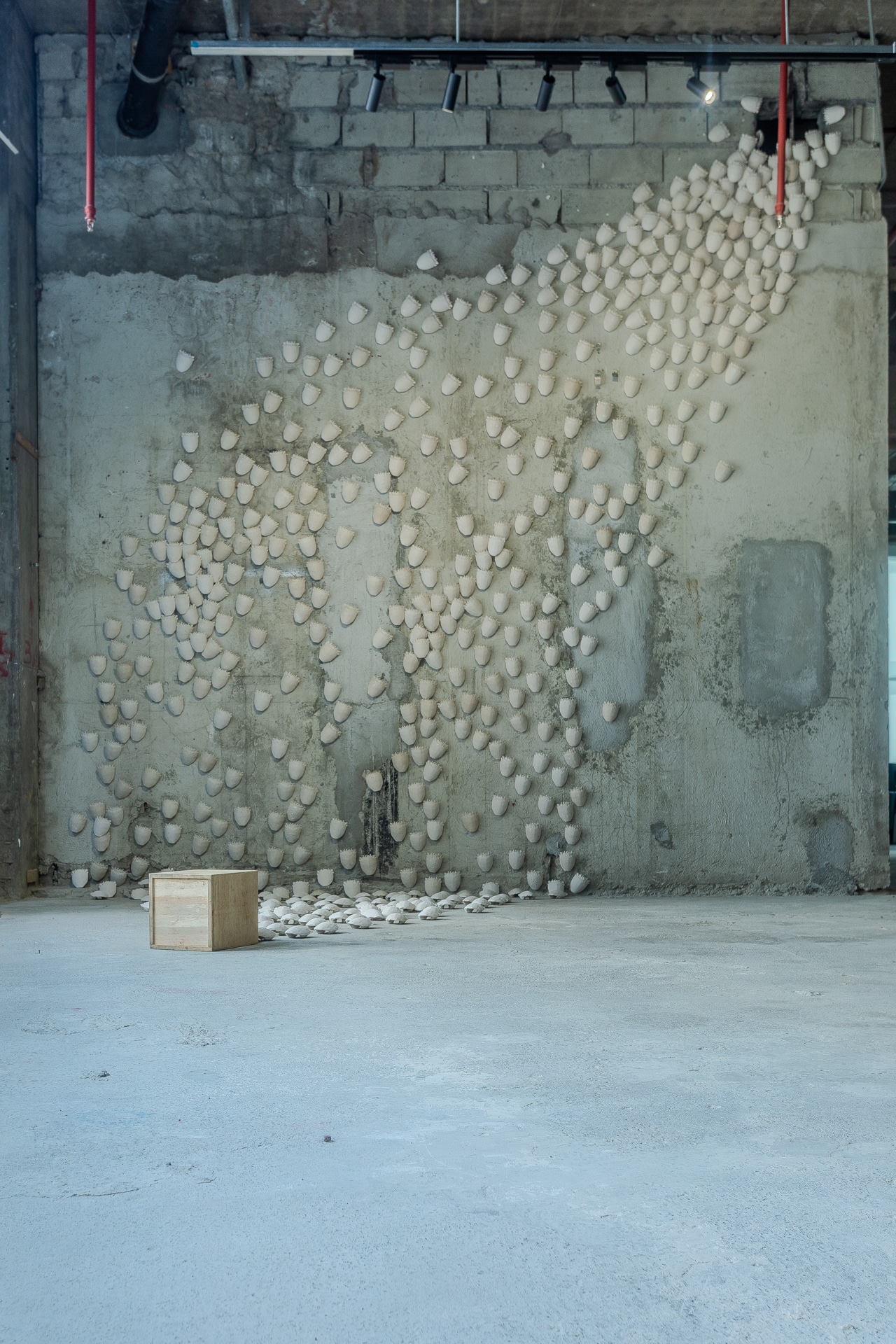
The backdrop is honest, especially for art made by established and renowned artists, whose work usually inhabits controlled environments, from esteemed galleries, fairs, and museum spaces both in the Philippines and abroad.
The exhibition title “Here & Now & Now & Then” is initially obscure. But its name opens a space that flows through colorful layered “nows” while looking back to a “then.” The former corporate floor coexists in a present moment filled with art. The “here” of the space is neither fully abandoned nor completely renewed but sparks a dialogue within a liminal moment in time.
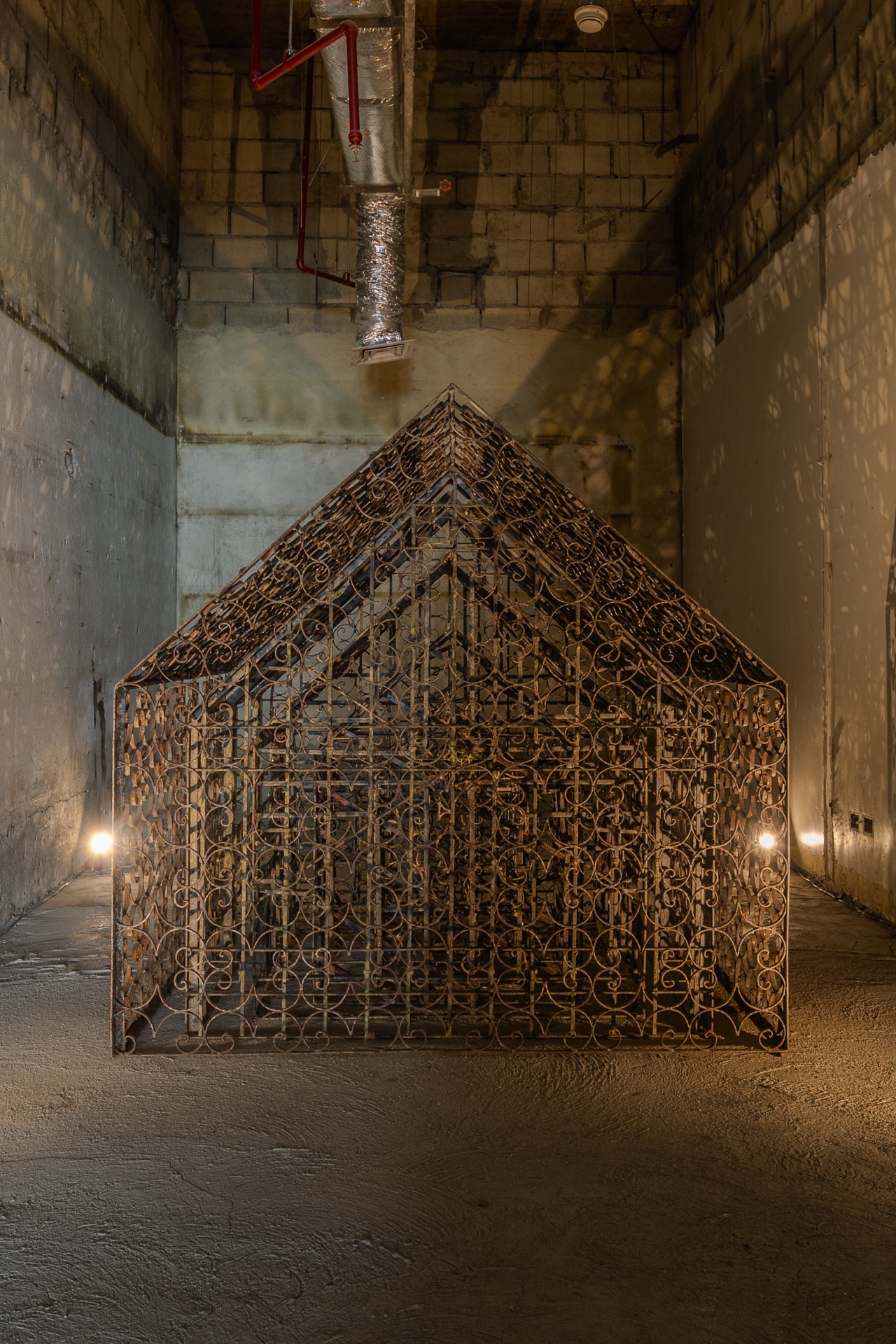
The space is honest, with every raw structural element becoming involved, influencing how visitors perceive the work itself. Ilarde’s curatorial approach has always leaned toward this. A previous show of his, titled “If the work speaks for itself, don’t interrupt,” points to this perspective on letting art communicate directly.
“Art changed the space by being in the space—not separated from it,” Catuira states. “And isn’t that the point? That art does not just belong in halls and walls, in paid venues or institutions. It belongs to life. To the spaces we move through. To the places we don’t usually look.”
Corners that flow
Immediately, the space opens up to Pete Jimenez’s boat sculptures, weaving through with raw details that show chipped bangkas standing like monuments, as he suggests a tribute to the challenges experienced by fisherfolk.
These associations to water continue into the ebbs and flows of Elaine Navas’ painting of the sea’s details, “Whatever is Moved is Divisible,” which depicts her friend and fellow exhibiting artist Christina “Ling” Quisumbing Ramilo’s photos of water on a trip to Mindoro.

Further into the room are great, big, stacked whale bones, a sculpture of Oca Villamiel, found from a beached whale in Quezon Province. Renowned for his use of raw materials, which match the current raw space well, Villamiel also exhibits work with dried fish bones meticulously gathered and neatly framed, as well as a massive pile of nylon fishnets, described as a “bahay ng mangingisda” by Angelyn Marquez, who assisted in installing the exhibition.

This presence of the sea is also felt in Jose John Santos III’s installation featuring several hundred of “cucarachas del mar,” cast in resin. These creepy-crawly sea cockroaches climb up on the concrete wall, infesting the space, almost coming alive.
Material dialogues
In the decidedly inorganic environment, much of the work explores materiality that relates to the raw surfaces of the space. “When you change the frame, you change the meaning,” Catuira says.
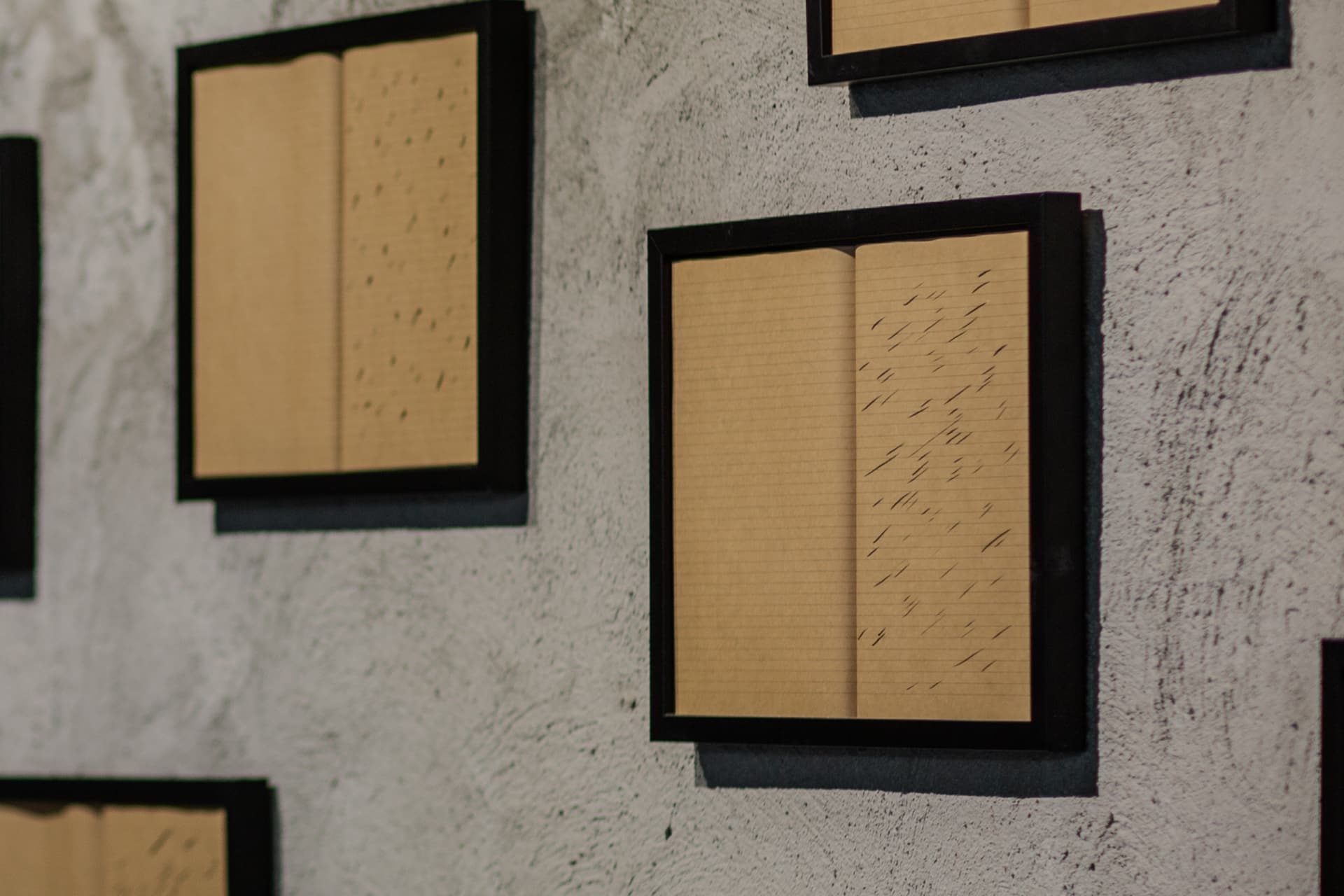
Look closely at Lani Maestro’s collection of framed drawings, “Strange Thirst,” and you’ll see dashes on open notebooks. Step back and you’ll see rain.
In an open space, Ringo Bunoan presents an intimate memorial, exhibiting photographs of gravestones that share the same date of passing as her mother, arranged like a clock. The images rest on soft pillows, contrasting with the hard surfaces that dominate the space.

The exhibition’s engagement with materiality continues through Juni Salvador’s work, two four-by-four wooden panels made of plywood, where he chipped off the surface with a mallet and incorporated the mallet with the work, creating a sense of scraping that dismantles both the idea of painting and its absence.
Further in, traditional canvases interact with the concrete. MM Yu’s brightly colored drip paintings, which depend on chance configurations with paint, come from a long, ongoing series, and connect to the elements of time in “Here & Now & Now & Then.”

Jan Balquin’s work from a 2016 series stems from a project placing small canvases on raw outdoor walls, letting the surfaces shape the painting. One, made on D. Tuazon Street, echoes the current exhibition space’s own bare textures.
Zean Cabangis’ “Intervals of Possibility” trades his usual methodical approach for fast, gestural strokes in cement, capturing the feeling of returning to Manila after his nature-surrounded studio in Laguna, and fitting harmoniously with the surrounding concrete.
In one of the smaller sub-rooms, Veronica Peralejo presents a lunar landscape that features a region of the moon where ice water was found, showing that there is life on it, contrasting the desolate beauty of both the moon and the abandoned space.
Hanging in the space are also the works of Marco Santos, who burns great, bulbous marks onto acrylic sheets using a blowtorch that, on closer look, sparkles in the natural light entering the building windows.
The aesthetics of decay
Several artists engage directly with concepts of construction, demolition, transformation, and decay.
Poklong Anading presents photographs and painted patterns of ramps on rubble and fallen rugs. The work evokes the image of a political trapo, hinting at how politicians seek funding for construction projects under dubious pretenses.
While Quisumbing Ramilo features her striking work that uses sandpaper as medium, mirroring the space’s own unfinished state. This specific work features sandpaper used in the construction of fellow artist Soler Santos’ home.

Gary-Ross Pastrana, who often works with collages, creates a larger, tactile collage in “Stream,” a reassembled traditional boat that was excavated during a residency at Lake Biwako in Kyoto. The cut and rejoined vessel traveled across Asia before finally settling in “Here & Now & Now & Then,” with its instructive labels for reassembling still visible.
“Artist’s Proposal” by Juan Alcazaren places a real 1/4-carat diamond onto a found basketball hoop, infusing a utilitarian object with unexpected value and whimsy, pointing parallels at an artist’s struggle to commit to ideas in actually making work.

Besides his installation of fishing boats, Jimenez also installs a rusted, matryoshka-like metal sculpture resembling a house, which plays with light and shadow as the day goes on, offering a sense of both shelter and decay.
Hanging on the wall, Bernardo Pacquing’s large-scale assemblage of wooden parquet tiles, mixed media, and cement delivers a monumental commentary on surface, structure, and physical presence.
While also scattered across the venue are two light works by Roberto Chabet: one reads “onethingafteranother,” a nod to aesthetic simplicity; the other, “for your eyes only,” which playfully critiques the seductive glow of neon in contemporary art.
Finally, curator Ilarde contributes his own work, “Faulty Landscape,” which has previously been exhibited, but now uses a crate from Art Basel Hong Kong. Ilarde’s work features used paint tubes and caps arranged in an overturned manner, inspired by a quote, “We move from a painting of landscapes to a landscape of painting,” and highlighting the waste accumulated in art-making but also the abundance of art in the country. With such, the viewer becomes part of the landscape.
**
As office folk in button-downs and pencil skirts wander in, taking breaks from their desks or slipping in the space while waiting for their coffee, the visitors become “participants, not passive viewers,” as Catuira calls it. And the claim has merit, as the unconventional setting does require a different kind of engagement than most traditional gallery spaces.
I think of Brian O’Doherty’s classic essays from the 1970s, “Inside the White Cube,” and how he writes about how “limits are established and framed” in traditional galleries, while every object attains this sort of sacredness to it. Then, art becomes a bit problematic. Ilarde, the artists, and the organizers address this.
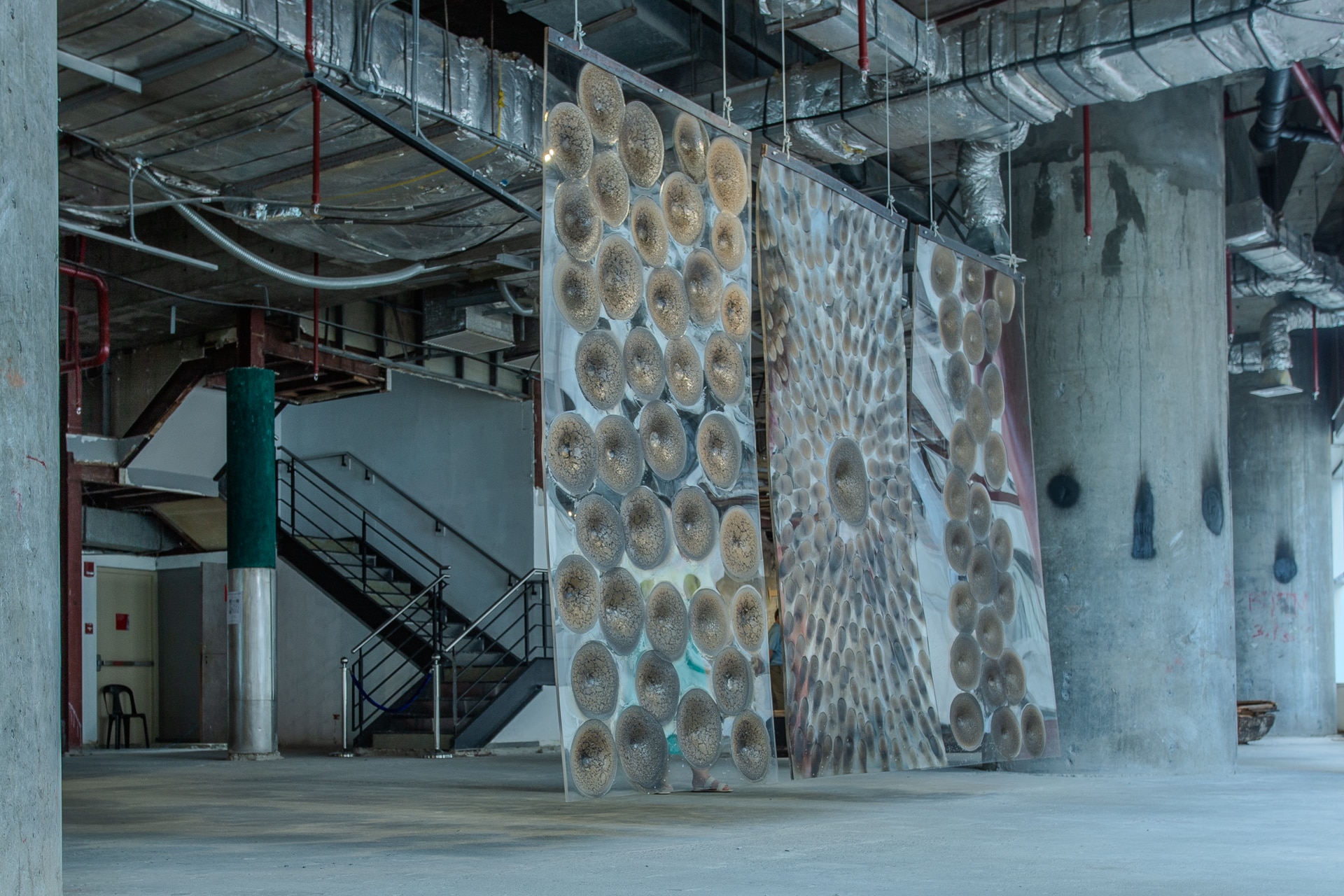
“Perhaps that is what we need now,” Catuira says, “Not just more places to escape to, but more places where we are reminded to look again. To feel again. To see again what’s already there.”
By placing art in a space that reveals its own history and limitations rather than concealing them, “Here & Now & Now & Then,” raises questions about context, authenticity and authenticity—illuminating the latent connection between art and the space it resides in, as imperfect or as unconventional as it can be.
Photos by Jun Yamamoto
Cover design by Angela Chen
“Here & Now & Now & Then,” curated by Nilo Ilarde runs from April 25 to May 25, 2025 at the 3rd floor, RCBC Plaza, Buendia corner Ayala Ave., Makati City






